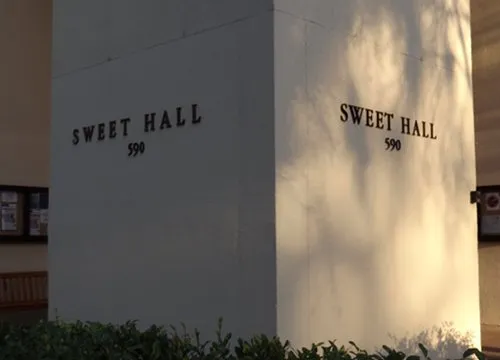Table of Contents
I’m not so sure. This is not to say that Stanford does not offer numerous opportunities for undergraduates to pursue research—it does. But the sort of research readily accessible is confined, and usually looks like working as a research assistant in another academic’s lab, or in research stipends that require students to undertake research projects on their own.
The nature of undergraduate research at Stanford is puzzling to me because I think it limits the quality of truly undergraduate research—not just undergraduates participating as researchers in other research projects. Not only that, but the way Stanford structures and promotes its undergraduate research grants is antithetical to the university’s fundamental ideals—not only those of intellectual rigor common to all prestigious institutions of learning, but the very ideals that make Stanford unique.
Undergraduate Advising and Research (UAR) is the campus organization that manages and distributes undergraduate research grants—that is, funding for original, student-designed research projects. Grants awarded vary in type, from Small Grants, to larger grants like the Chappell-Lougee and Major Grants that support research projects that typically take a quarter to complete. Grants awarded support traditional academic research or self-designed artistic projects.
All of these aspects of undergraduate research grants seem great to me. The problem comes with the actual implementation of undergraduate research projects and the way different grants are awarded. In order to foster faculty–student relationships, grants are only awarded on an individual basis. This means that multiple students working collaboratively on a research idea may not simultaneously apply for research awards, even if all students involved share equal roles in bringing said project into fruition. Instead, any student who wishes to pursue original research must work alone to preserve authentic faculty-student relationships in the research process.
The narrow scope of undergraduate research grants at Stanford concerns me for two primary reasons. First, it bothers me that a first and foremost academic institution would stifle academic creativity while simultaneously encouraging creativity and innovation in public and private service. Second, I think that limiting undergraduate research to one researcher is antithetical to the ideals that Stanford holds most dear—those of inter-discipline, unconventionality, and perhaps most glaringly, collaboration.
Compare the undergraduate research policy with Stanford’s institutionally-reinforced, entrepreneurial startup culture. The impressive portfolio of companies in Silicon Valley started by Stanford graduates (Yahoo, PayPal, etc.) is well known, so too is the university’s smug sense of “entrepreneurship” generated by its legacy. I personally think this entrepreneurial exceptionalism is well-deserved and good for the university to continue promoting, particularly in the forms of the Mayfield Fellows Program and numerous courses that ostensibly “teach” such elusive concepts as creativity, innovation, and especially, entrepreneurship.
With regard to public service, grants exist through the Haas Center for original public service projects, and the contingencies by which said grants are awarded are far more inchoate than those of the UAR.
But where is the university’s support for the next big intellectual thing? It doesn’t exist with the UAR’s current policy, and from what undergraduate advisors in the UAR have to say, they aren’t particularly interested in budging.
I understand the importance of fostering strong student-faculty relationships, and I think that self-designed undergraduate research projects pose an excellent opportunity for developing these relationships.
However, to promote great academic work among its undergraduates, Stanford should not limit intellectual creativity—which is what the university is fundamentally doing by limiting the scope of original undergraduate research.
I encourage the university to rethink its research grant process, and rather than considering awarding funds based on whether a particular project fits its cookie-cutter formula, it should do so more on the quality of ideas and the soundness of research framing.





